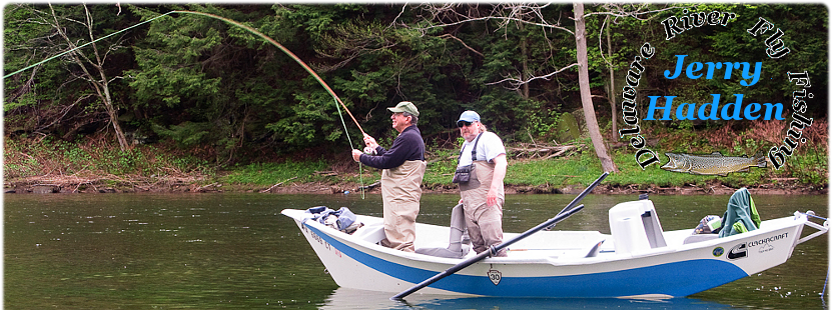
WET FLIES WORK!
On The Delaware River.

Photo by Jerry Hadden
The Above photo taken in my tying room, at my home as we prepare to float the Main Stem of the Delaware river.
WET FLIES WORK!
On The Delaware River.
Wet flies work on the Delaware River. I found that out in my beginning days of fly fishing. Working an area of my local stream with nymphs and dries, an "old" guy came down the creek casting across and letting his line straighten out down the current. He would make a few casts, then take a few steps, cast again and repeat the process. When he got near me, he got out of the stream, walked the hank, said hello as he passed behind me, and then went back and repeated the same process. Out of the comer of my eye, I noticed he had hooked into three fish during the time he was in my sight.
Later, I noticed him again walking the bank
this time going upstream Once more he worked down and repeated his actions. This time
I called out to him asking what he was using. His reply was unintelligible to me as he
hurried downstream. His rod bowed a couple times more and he stuffed more fish into his creel.
(PLEASE NOTE THAT THIS GENTLEMAN WAS ENCOUNTERED WHILE FISHING A LOCAL PUT AND TAKE STREAM.
I IN NO WAY ENCOURAGE KILLING WILD DELAWARE RIVER TROUT. PLEASE PRACTICE CATCH AND RELEASE.)
Back at the car, my buddy told me he thought that the old guy had probably been using wet flies, and that they were a traditional method of fishing. "They work in stocked streams," he told me, "but not in the Delaware. Those fish are too smart."
As I fished more, and began tying, and fishing more, I learned how smart the fish on the Delaware River were. Match the hatch. Get the size right. The color is key. These were - and are - the basics for fly fishing. Even so there are times when the fish, aren't rising, and times when, although rising, they are not taking my hatch match.
One late June evening on the West Branch of the Delaware River, with fish rising all over the place, and none taking my match the hatch presentation, in frustration I tied on a sulphur wet, Thud. A hefty brown took it within a foot of drift. That continued for another forty-five minutes. Before calling it quits, I had caught and released 16 browns from 10 to 18 inches. That wet fly worked! Sixteen fish on the Delaware! As I fished more, and began tying, and fishing more, I learned how smart the fish on the Delaware were. Match the hatch. Get the size right. The color is key. These were - and are - the basics for fly fishing. Even so there are times when the fish aren't rising, and times when, although rising, they are not taking my hatch match.
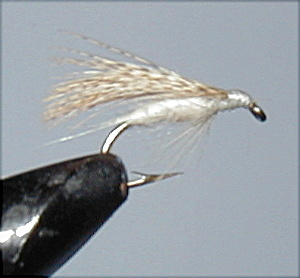
Photo by Jerry Hadden
Another evening on the Delaware when my match the hatch wasn't working, nor my sulphur wet, I went to the bank in frustration to talk with one of my buddies. Like me, he had a couple refusals and long releases. He told me that the person down from him had caught three good ones casting a streamer, close to the bank. When the successful fisherman came in, I asked him what he had been using. As he showed me his line with the fly still attached, he told me that he had seen a couple very large light flies earlier, and that the closest thing he had to match them was a small light colored streamer. I looked at the fly and saw that he had caught them on a Light Cahill Wet. I went back out and in three casts had lost one and landed two 18+ browns. Wets work on the Delaware and deserve to be included in your match the hatch arsenal. I don't know what they match. I think sometimes a spinner, an emerger, downed mayfly or caddis pupa. But wet flies do work. Try them. This old guy does.
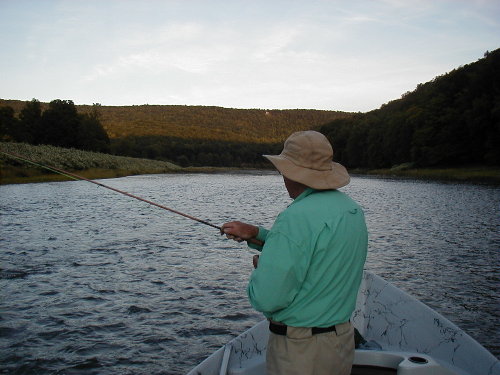
Photo by Jerry Hadden
Method: To rising fish, I cast just as I would I a dry a couple of feet up. (It may be necessary, in order to compensate for the slight sinking, to cast a little bit beyond the rising fish.) When fishing blind to a likely spot or against the bank, I cast across and up a little to provide more drift. Strange as it may seem, I don't keep my rod following the fly but at a right angle to the line as it drifts. Fishing this way with a relatively tight line, I can feel the take.
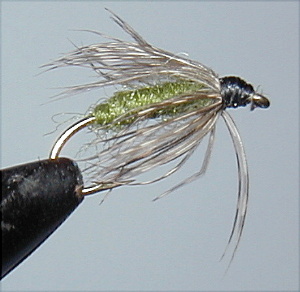
Photo by Jerry Hadden
Tying: I use a standard wet or dry fly (Mustad 94840 or 3906), hen neck hackle, and natural dubbing using thread to match. The tail - for 16 and up - is from the same neck.
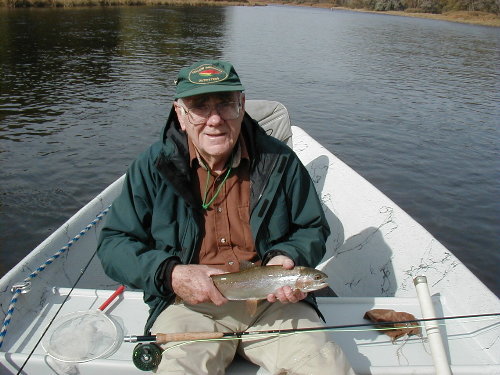
Photo by Jerry Hadden
My favorite patterns for the upper Delaware River are the sulphur wet, light cahill, and various shades of olive. I should mention that I am deeply thankfull for Dave Hughes' book Wet Flies. It is an interesting read and has extensive directions, and helpfull advice about the history, tying and fishing of wet flies.


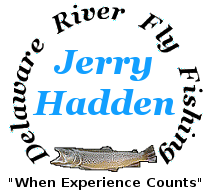 Delaware River Fly Fishing
Delaware River Fly Fishing